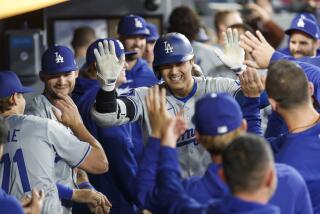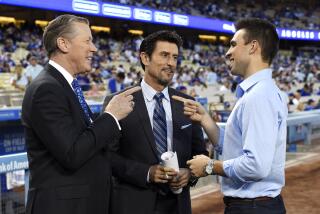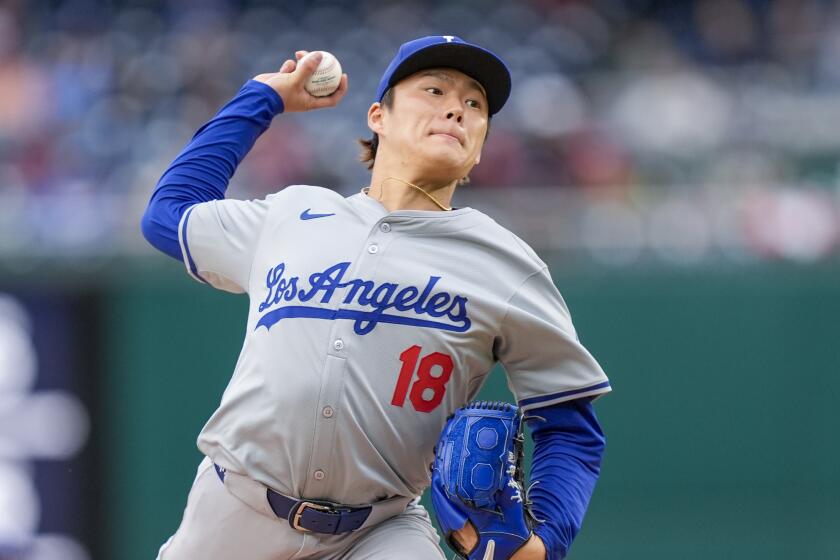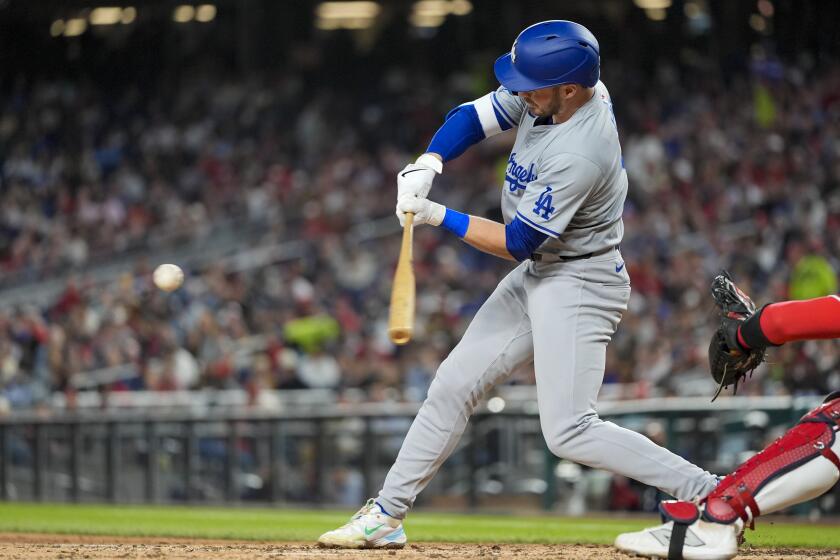Dodgers Dugout: Should Clayton Kershaw’s injury change the team’s decision-making on trades?
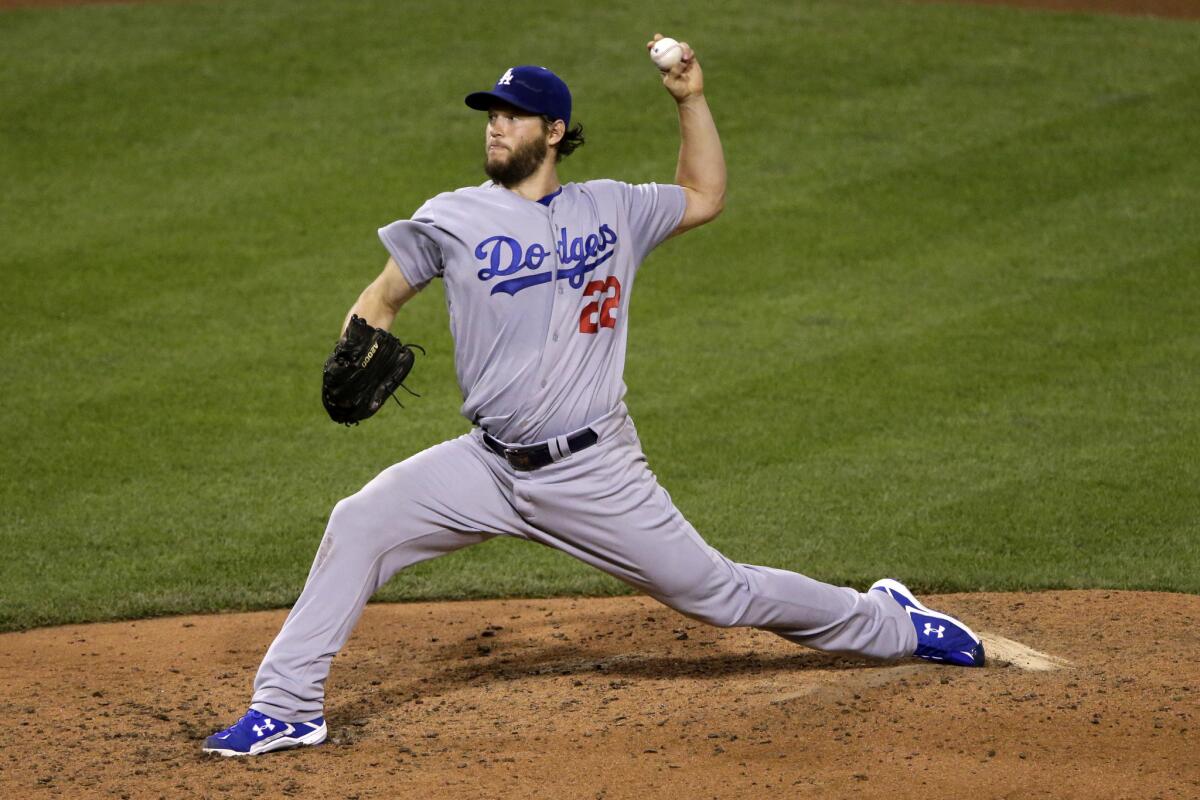
Hi, and welcome to another edition of Dodgers Dugout. My name is Houston Mitchell, and I learned the five scariest words in the English language this week: “Clayton Kershaw suffers injury setback.”
Kershaw’s back keeps him out
So, the Dodgers announced this week that Clayton Kershaw did not respond well to the simulated game he pitched on Sunday. It seems his back was hurting a lot the next day, and it will be at least three weeks until he returns. Dave Roberts said surgery is an option, which would put him out for the rest of the season.
Kershaw last pitched on June 26. At the time, the Dodgers were vying for a playoff spot and a lot of people were expecting them to make a trade for a hitter or starting pitcher to gear up for the playoff run. When Kershaw’s injury was announced, every Dodgers fan had to think, if only for a moment, that the season was pretty much over. Instead, the Dodgers have gone 13-7, are four games behind the Giants for first place and would earn the first wild-card spot if the season ended today.
So what do you do now if you’re the Dodgers? Do you think, “We have a real shot, so let’s make a couple of trades to go for it all now”? Do you think, “The odds of us making the playoffs, and even if we do, winning without Kershaw are long, so let’s hold on to all our prospects and not give them away for a quick fix”? Do you assume Kershaw will be back in three weeks and make decisions accordingly, or do you assume he is out for the season and make decisions based on that?
As much as I bash Andrew Friedman, he is in a tough position. The Kershaw injury puts everything in flux. Before you might have been willing to risk trading for someone who will become a free agent after the season, because that person will help you win it all this season, now you have to wonder if it is worth giving up a De Leon or a Pederson for a short-term boost.
I get a lot of emails from fans who think the Dodgers should give up a top prospect like Urias for a player who can virtually guarantee a playoff spot this season. They were probably fans of the 1987 Detroit Tigers, who traded a top prospect to Atlanta for veteran right-hander Doyle Alexander in August. Alexander went 9-0 for the Tigers, leading them to the ALCS, where they lost to Minnesota. Who did the Tigers give up for Alexander? John Smoltz, who became a Hall of Fame pitcher for the Braves. So was that trade really worth it?
So what will the Dodgers do? I don’t know anyone who has been able to successfully predict what Friedman and his front office will do. The next 10 days will be interesting.
Turner’s back
Justin Turner must be hearing those rumors that the Dodgers are talking to the Tampa Bay Rays about trading for third baseman Evan Longoria, because Turner is hitting as well as anyone in the NL the last month or so.
Since July 1 (16 games), Turner is hitting .323 with six homers and 16 runs batted in, which would project to 61 homers and 162 RBIs over a full season.
In 16 July games, Longoria is hitting .319 with four homers and 11 RBIs.
For those of you who wonder if they would trade for Longoria and move Turner to second, keep in mind two things: 1. Turner is coming off knee surgery and second base would put a lot more stress on that knee. 2. The Dodgers are happy with Chase Utley and the swagger he has brought to the lineup.
So really, what will the Dodgers do?
I wouldn’t be surprised to see them trade for a top reliever in an attempt to shorten games like the Kansas City Royals have done so successfully. If they can acquire someone like Aroldis Chapman, then suddenly you don’t mind if the rotation of Kazmir, Maeda, Norris, McCarthy and Urias can only give you six innings a game. Sure, they’d need to pitch longer occasionally, but if you suddenly have a Blanton/Liberatore/Chapman/Jansen seventh-eighth-ninth inning team, then it is easier to get away with a Kershaw-less rotation.
Of course, the best solution is for Kershaw to come back in three weeks, trade for Longoria, trade for Chapman and win the World Series. And the odds of all four of those things happening are the same as the odds of Friedman hiring me as his special assistant.
Ask Ross Porter
Former Dodgers announcer Ross Porter will be answering select reader questions for the rest of the season. Email me a question for Ross, and I will pass it on. His latest response:
Jim Brandi: Ross, when did major league baseball start tossing out every pitched ball that comes in contact with the dirt and what precipitated this? Seems like it was a few years ago now. They must go through quite a few baseballs compared to 10 years ago.
Ross: In the 1980s, pitchers could use balls that had hit the dirt. Now, if a pitch hits the dirt, it is almost always removed. The scuffed cover of a baseball could allow a pitched ball to have unusual movement. Some grips by a pitcher can take advantage of that. Once a baseball is taken out of play, it is never returned. It may be recycled into batting practice balls or sent to the minor leagues.
During an average game, Jim, 100 to 110 baseballs are used -- meaning only two or three pitches per ball. There’s a problem with new baseballs in that they are coated in a shiny gloss that makes them hard to grip. They need to get dirty and be properly rubbed. Major league baseball has been using Lena Blackburne Rubbing Mud for nearly 75 years, a special mud that removes sheen without damaging the leather. The mud and a little water goes on the leather, but not the seams. Who was Lena Blackburne? A third base coach of the Philadelphia A’s who discovered the mud in the early 1940s.
The mud comes from a secret location on the New Jersey side of the Delaware River. It is described as a “a very fine mud, a cross between thick chocolate pudding and whipped cold cream.” About 1,000 pounds of this mud is accumulated each July and stored in barrels for the winter. It is distributed to major and minor league teams each spring.
Before each game, one of the umpires or someone from the stadium staff rubs all the balls with the mud. The Blackburne company sells a 32-ounce container of the mud for just over $50, enough to last a team an entire season, so its annual gross is less than $25,000. Every baseball used in the big leagues comes from the same factory in Costa Rica, and every single ball is hand-stitched. Three hundred employees collectively produce nearly 2 1/2 million baseballs a year.
What Vin Scully means to me
I asked you to tell me your best Vin Scully memory, and I got a lot of responses. I will publish selected ones in each newsletter. And keep emailing them to me.
Christian Boyce: I am a Northern California boy, a San Francisco Giants fan despite a UCLA education and a Santa Monica residence. I remember listening to a Giants-Dodgers game on the radio while driving down the great San Joaquin Valley, coming home from my mom’s house in Davis. The game was tense as I passed Bakersfield and Grapevine, and Vin Scully was really painting a picture with his description of the action. Anyhow, I made it to Santa Monica, and the game was still going. I didn’t have an AM radio in the house and this was long before iPhones and streaming were invented, so the only way for me to hear the end of the game was to stay in the car. This was not an easy decision to make as I’d needed a bathroom since Sylmar! Scully’s call of the game was ultimately too much to resist: I stayed in the car and listened. I don’t remember how the game ended, only that I was in great physical discomfort for the last bit of it.
And it was totally worth it.
Worth your time
The Sports Museum of Los Angeles recently reopened, and to celebrate it has a special collection of Dodgers memorabilia. Some of the things you can see include:
A gallery dedicated to the Negro Leagues and Jackie Robinson, including a Robinson game-worn jersey and bat.
Roy Campanella and Don Newcombe’s MVP and Cy Young awards.
The first ball used at the opening of Brooklyn’s Ebbets Field in 1913.
Johnny Podres’ 1955 World Series MVP trophy.
A Dodgers 1981 World Series trophy.
Dodgers game-worn jerseys, including those from the legendary 1955 “Boys of Summer” team.
Awards (Gold Glove, MVP, etc.) given to Dodgers including Steve Garvey, Gil Hodges, Wes Parker and John Roseboro.
If you are a Dodgers fan, it is well worth a couple of hours of your time. For more information, click here.
The TV situation
If you would like to complain about the Dodgers’ TV situation, you have three options: The Dodgers, Time Warner Cable and whatever local cable or satellite provider you have that doesn’t carry the Dodgers. Here’s who to contact:
For the Dodgers, click here or call (866) DODGERS, or (866) 363-4377. (I hope you like form letters).
For Time Warner, click here.
For DirecTV, call (800) 531-5000 or click here.
For your local cable or satellite provider, consult your bill for the customer service number and for the website.
And finally…
Vin Scully discusses the history of beards. Hear it all here.
Have a comment or something you’d like to see in a future Dodgers newsletter? Email me and follow me on Twitter: @latimeshouston
More to Read
Are you a true-blue fan?
Get our Dodgers Dugout newsletter for insights, news and much more.
You may occasionally receive promotional content from the Los Angeles Times.

